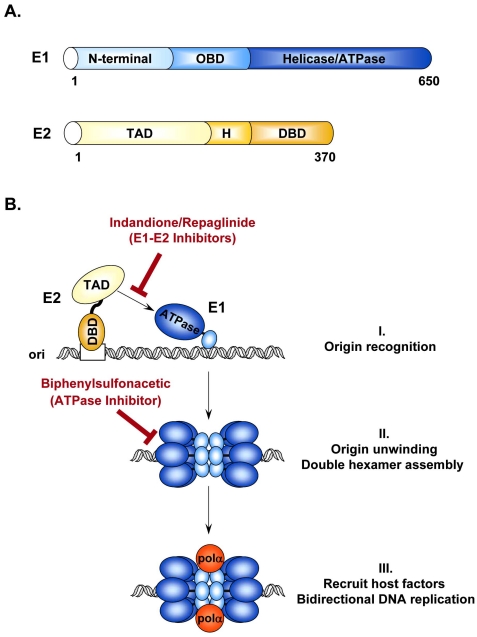Fig. (2).
Initiation of HPV DNA replication. (A) Schematic representation of the viral proteins E1 and E2 required for replication of the HPV genome. E1 and E2 are approximately 650 and 370 amino acids in length, respectively. Locations of the different functional domains in each protein are indicated. OBD: origin binding domain; TAD: transactivation domain; H: hinge region; DBD: DNA-binding domain. (B) Schematic diagram of the initiation of HPV DNA replication. (I) Replication is initiated by the recruitment of E1 (blue), by E2 (yellow), to the viral origin. This recruitment step involves an essential protein-protein interaction between the TAD of E2 and the helicase domain of E1 that can be antagonized by the Indandione or Repaglinide class of small molecule inhibitors. (II) E2 recruits additional E1 molecules and promotes their assembly into a replication-competent double hexameric helicase. ATP also stimulates the oligomerization of E1 and is further needed to power the helicase activity of E1. Biphenylsulfonacetic acid inhibitors have been identified that abrogate the ATPase and helicase activities of E1. (III) Finally, E1 interacts with host cell replication factors such as polymerase α primase (pol α; orange) to promote bidirectional replication of the viral genome.

